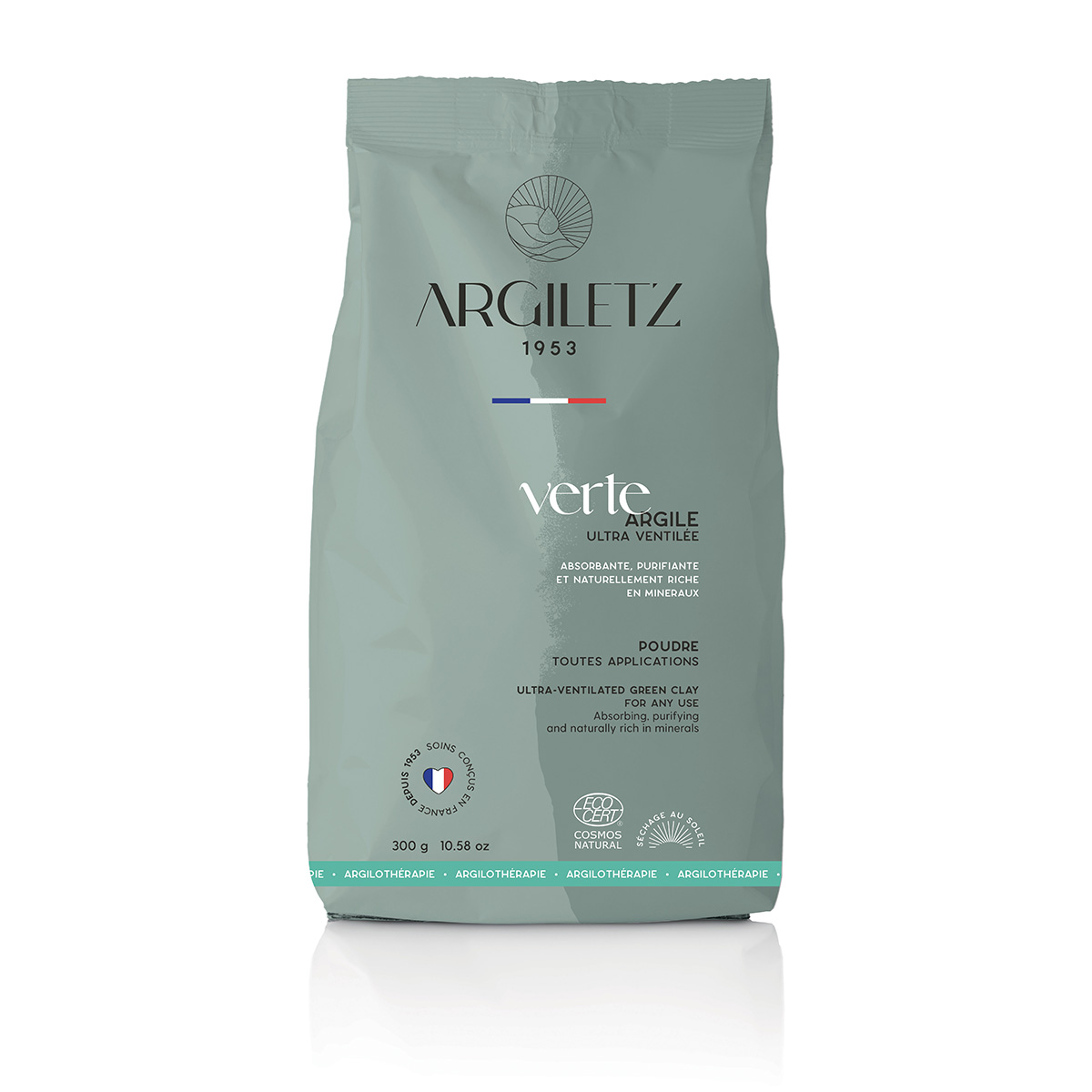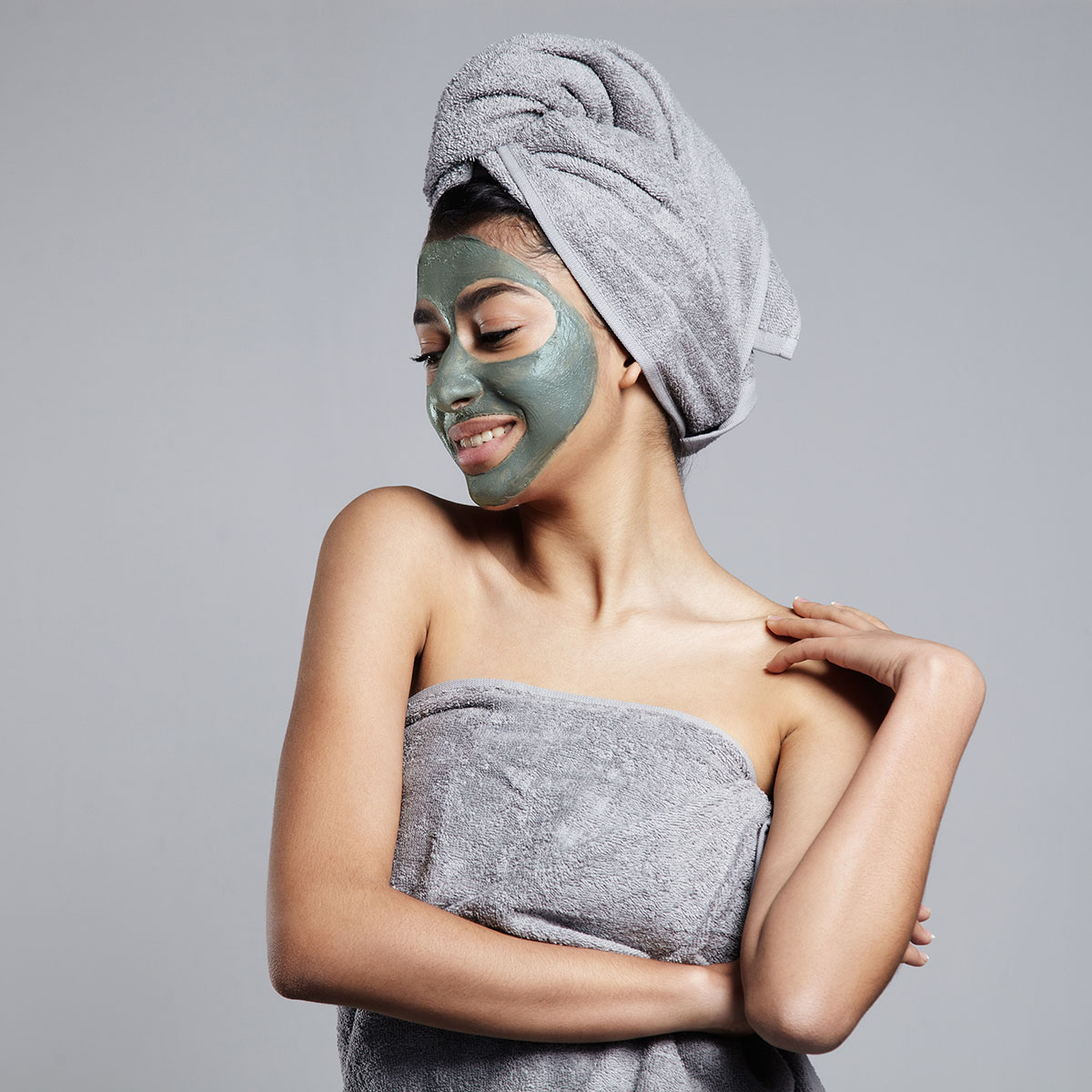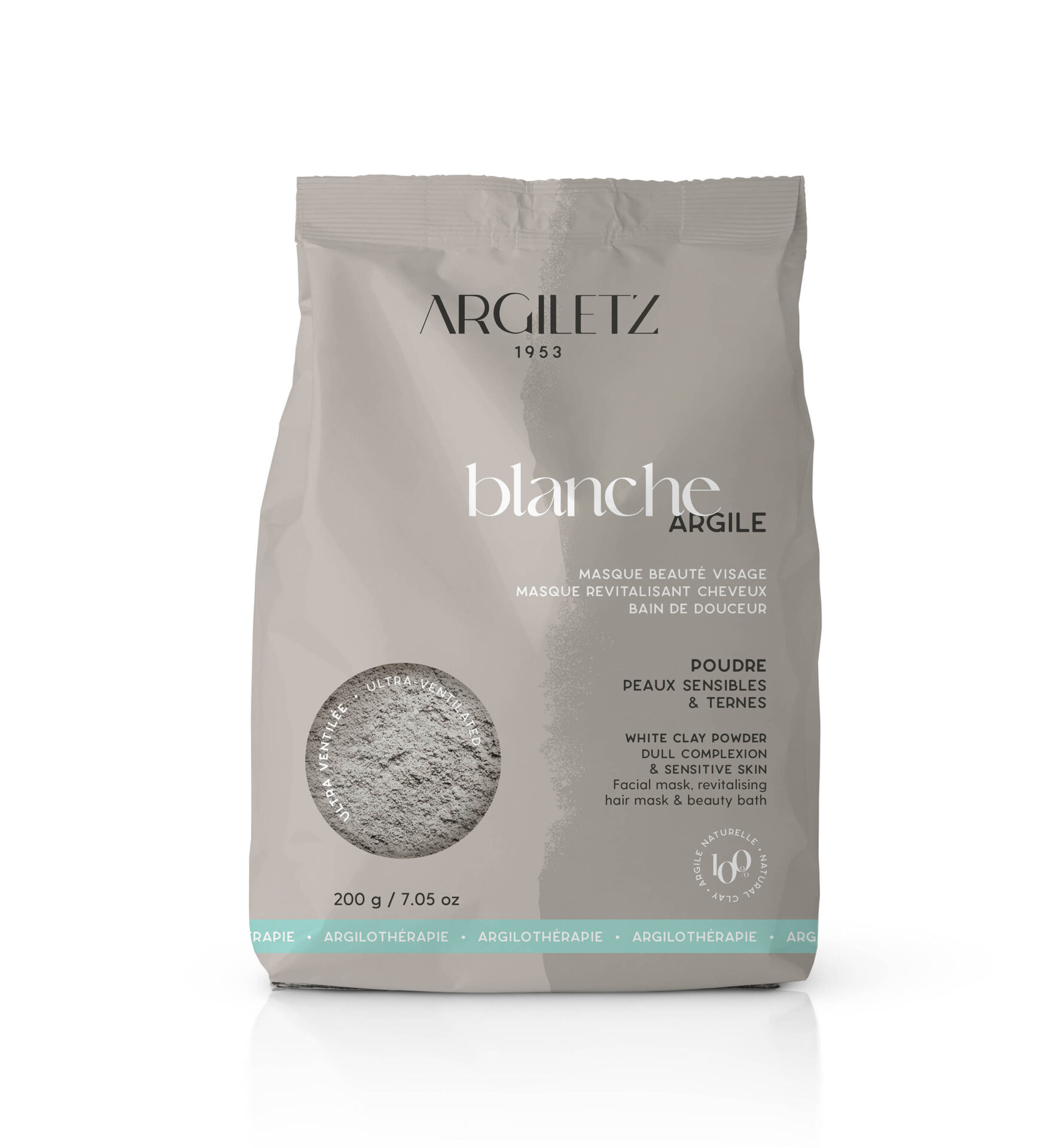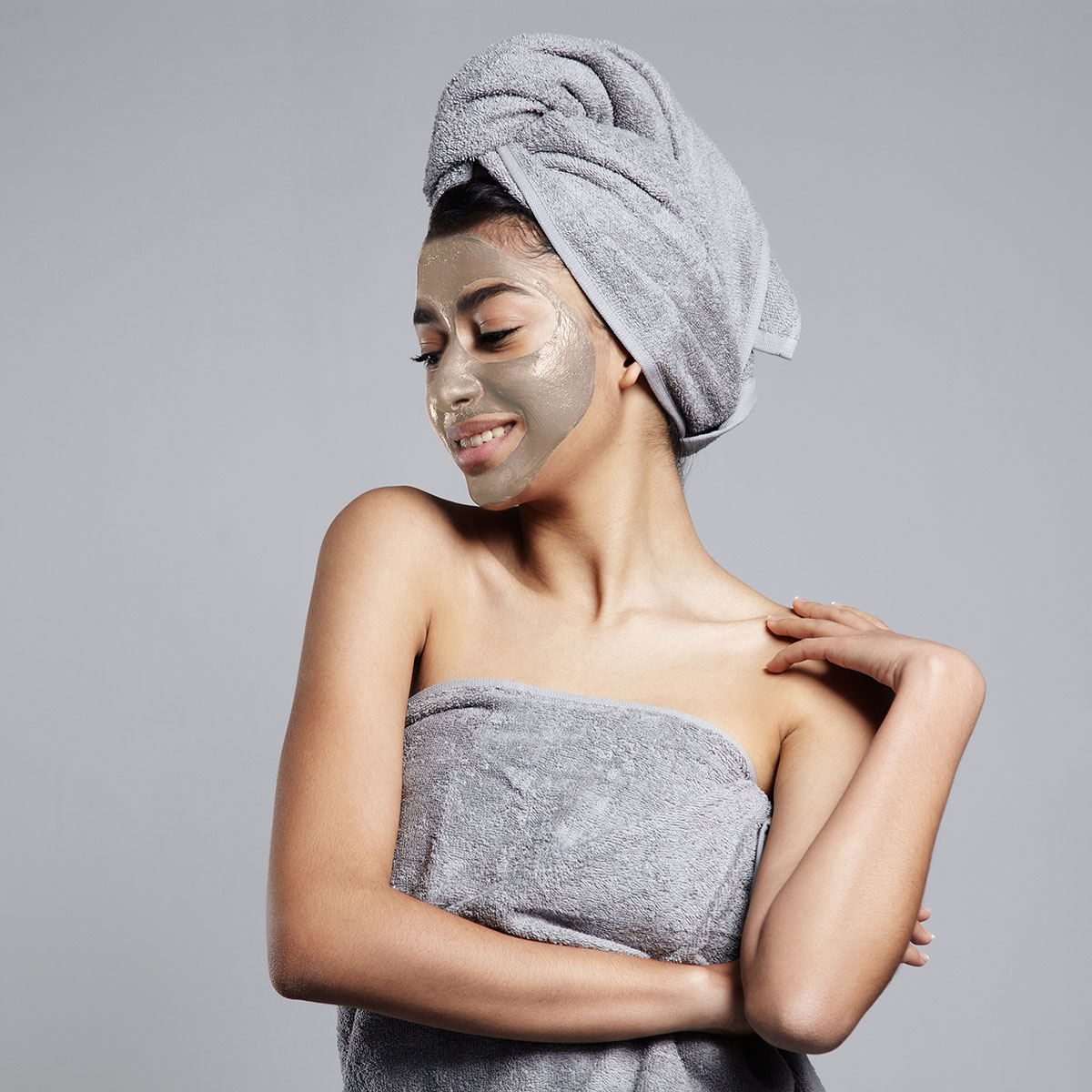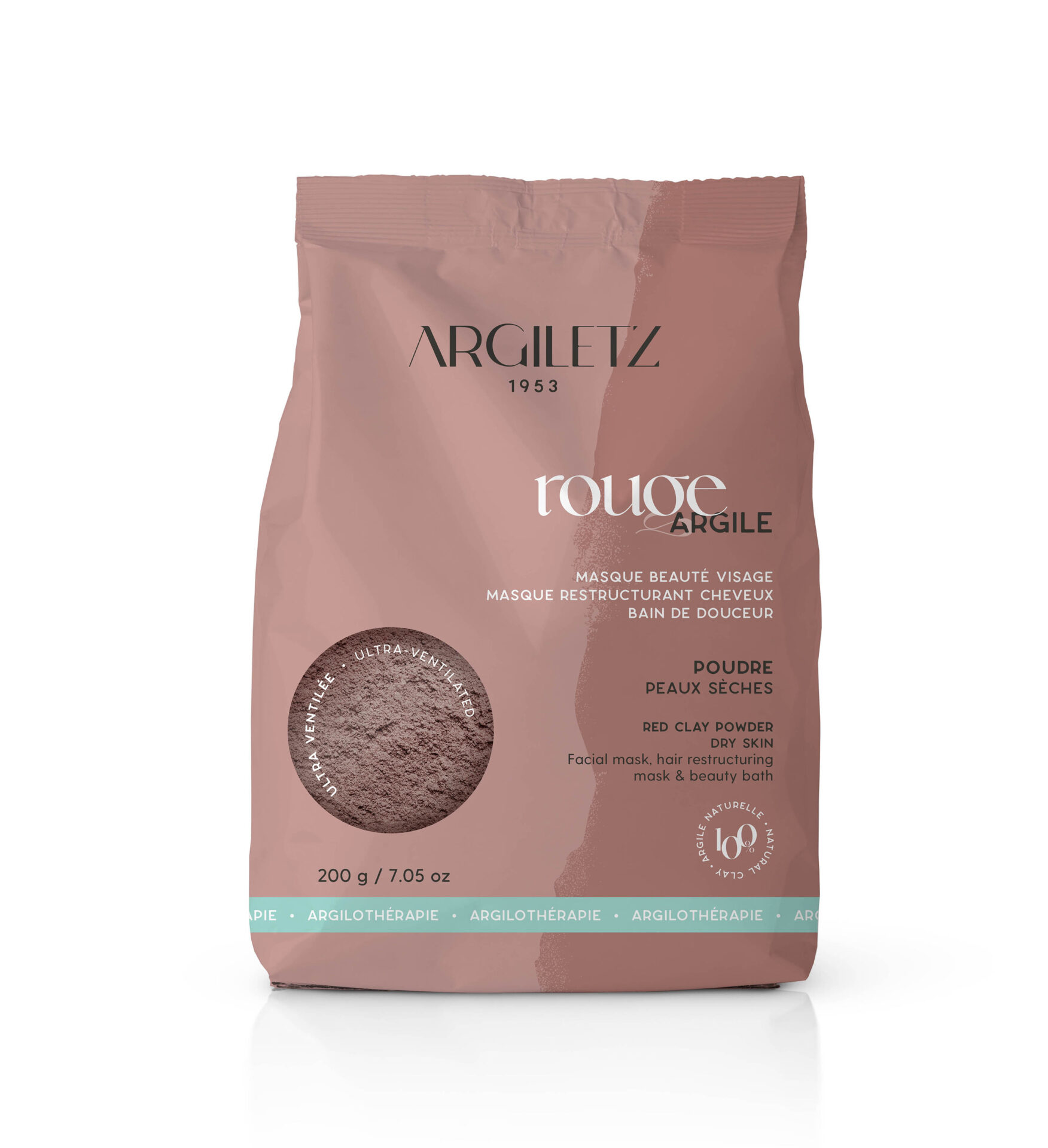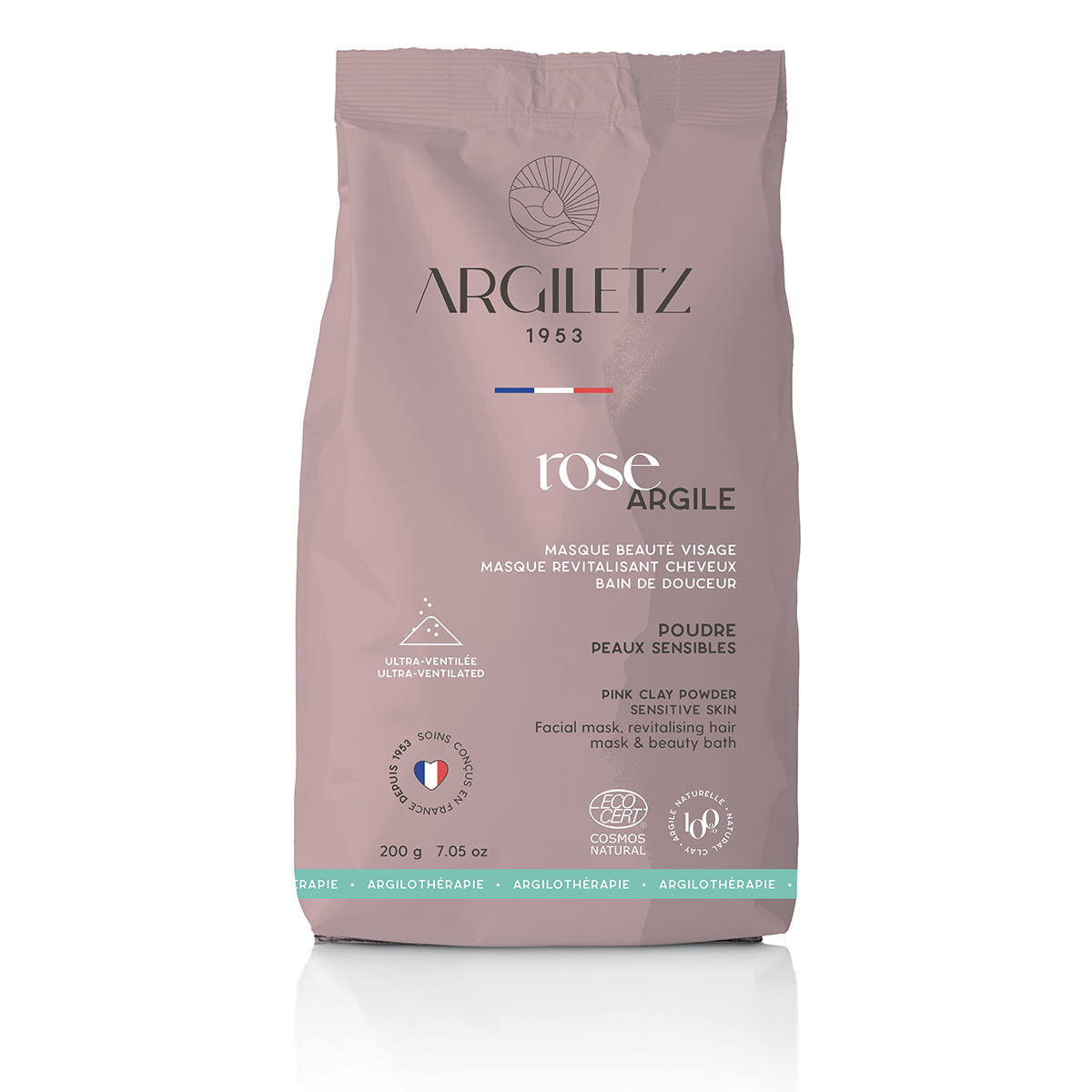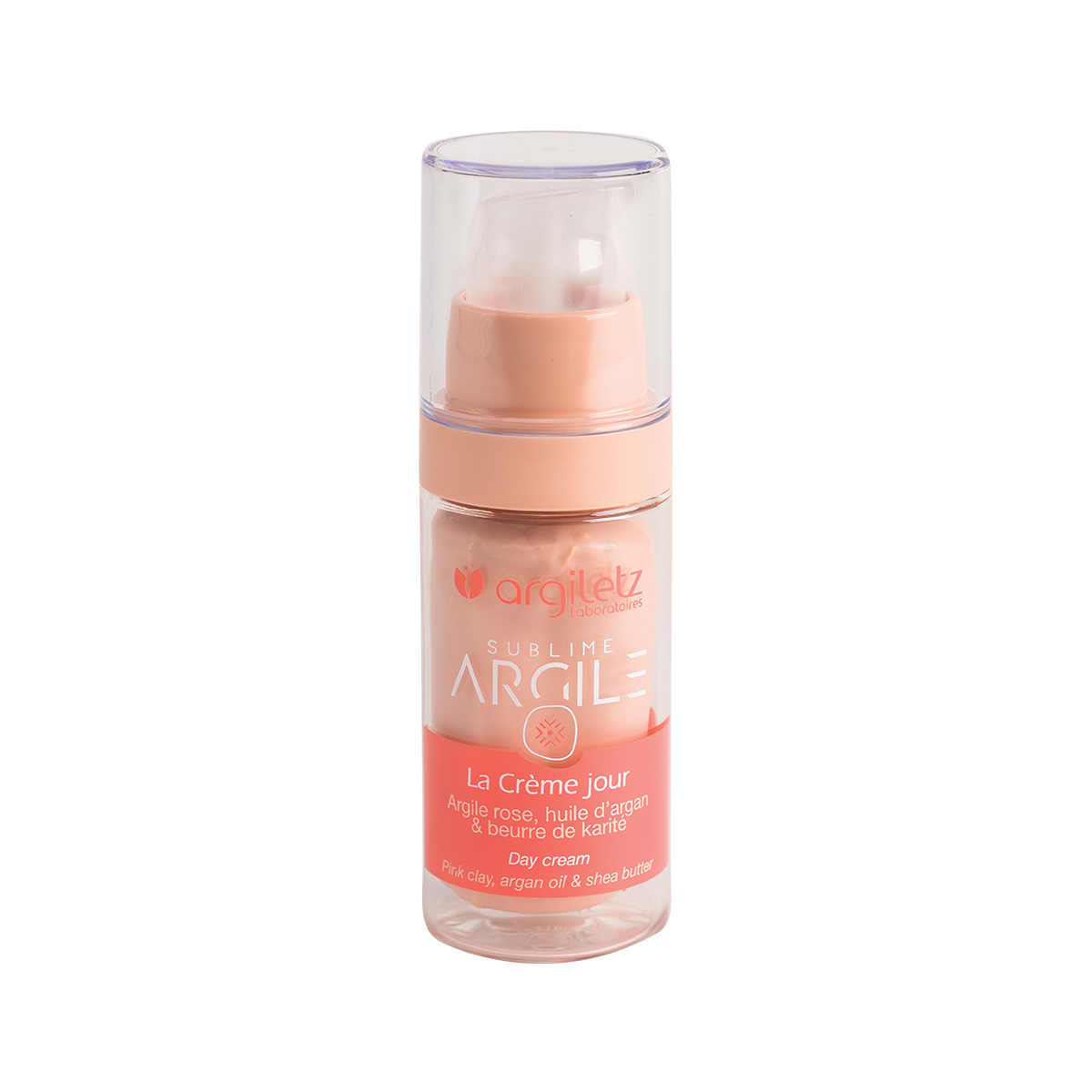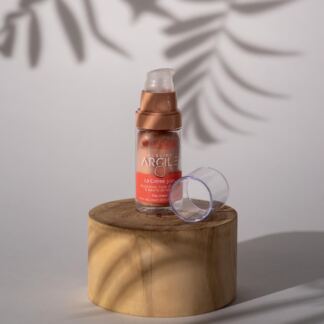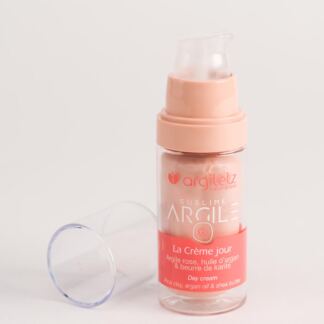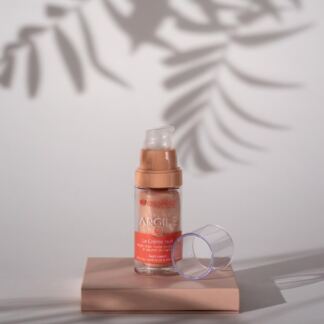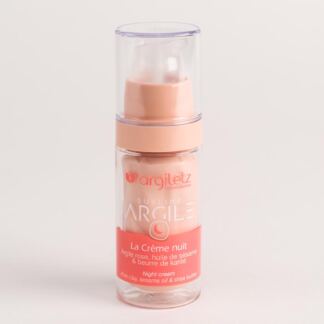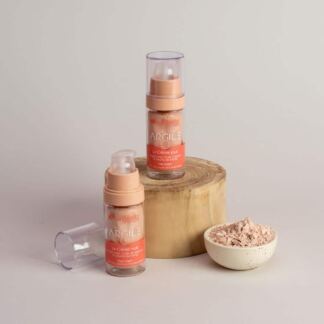Les masques à l’argile reviennent en force dans la sphère beauté au naturel. Efficaces, sains et simples à réaliser, ils prennent soin de la peau, du corps et des cheveux en toute simplicité. Même si l’argile est une matière noble et naturelles, il est essentiel d’adopter les bons gestes pour profiter de tous ses bienfaits. Voici 5 choses importantes à savoir sur les masques à l’argile.
La couleur de l’argile a une grande importance
L’argile est une roche sédimentaire, extrêmement riche en minéraux et en oligo-éléments. Si l’argile verte est de loin la plus connue de toutes les argiles, il existe néanmoins d’autres couleurs d’argileaux bienfaits étonnants. Saviez-vous que chaque couleur d’argile possède des propriétés qui lui sont propres ? Rouge, rose, jaune, blanche, ghassoul… Chacune s’adresse à un type de peau en particulier. On vous propose un rapide tour d’horizon des différentes argiles.
L’argile verte est recommandée pour les peaux normales à grasses. Grâce à son pouvoir absorbant, elle permet d’éliminer l’excès de sébum, de purifier l’épiderme et de réduire visiblement les pores dilatés.
L’argile blanche, aussi appelée kaolin, est la plus douce des argiles. Elle est particulièrement conseillée pour les peaux ternes et matures qu’elle va nettoyer en douceur et sublimer.
L’argile rouge est quant à elle réputée pour son côté « enlumineur de teint », et si elle est également appelée « l’argile bonne mine », ce n’est pas pour rien ! Grâce à sa richesse en oxydes ferriques qui lui confère sa couleur de feu, elle va prendre soin des peaux sèches, les adoucir et révéler leur éclat.
L’argile rose, subtil mélange d’argile rouge et d’argile blanche, est appréciée des peaux sensibles et réactive car elle est douce et respecte le pH de l’épiderme. Elle possède des propriétés apaisantes et rééquilibrantes, idéales pour les peaux sujettes aux rougeurs et irritations en tous genres.
L’argile jaune, moins connue, est une argile particulièrement adaptée aux peaux mixtes grâce à son action exfoliante. Elle revitalise, matifie et affine le grain de peau, pour un toucher soyeux et une peau visiblement plus lisse, avec moins d’imperfections.
Enfin, l’argile ghassoul est un trésor issu des montagnes de l’Atlas. Elle possède de très nombreuses propriétés qui la rendent parfaites pour absolument tous les types de peau. Elle est réputée pour son action absorbante et nettoyante mais aussi exfoliante et adsorbante. On comprend très vite pourquoi elle fait partie intégrante du rituel du hammam !
Vous hésitez sur le choix de l’argile à utiliser ? N’hésitez pas à réaliser notre petit test ! En quelques clics, vous saurez quelle argile correspond le mieux à votre type de peau.
-



Argile verte en poudre ultra ventilée – Certifiée COSMOS NATURAL**
Sachet 300gAbsorbante et purifiante | Toutes applications
6,30€Ajouter au panier52 avis -



Argile blanche en poudre ultra ventilée
Sachet 200gBain | Masque visage & cheveux | Peaux sensibles et ternes
7,10€Ajouter au panier18 avis -



Argile rouge en poudre ultra ventilée
Sachet 200gBain | Masque visage & cheveux | Peaux sèches
7,10€Ajouter au panier19 avis -



Argile rose en poudre ultra ventilée – Certifiée COSMOS NATURAL**
Sachet 200gBain | Masque visage & cheveux | Peaux sensibles
7,10€Ajouter au panier13 avis
Il ne faut pas laisser sécher son masque à l’argile
L’une des erreurs à éviter et qui pourtant est pratiquée par bon nombre d’amateurs de masques à l’argile, c’est de laisser son masque sécher. On pense parfois qu’il faut attendre que le masque soit totalement sec pour l’enlever et rincer la peau. C’est une erreur. En effet, en séchant, le masque capte l’eau dans les tissus cutanés et les déshydrate. On peut avoir une sensation de peau très propre après le rinçage car l’épiderme brille et est parfaitement lisse. Pourtant, cette interprétation n’est pas bonne : c’est un signe que la peau est simplement desséchée, déshydratée. C’est finalement tout le contraire de ce qu’un masque à l’argile doit apporter à la peau ! Pire encore, en puisant l’eau dans l’épiderme, l’argile qui sèche risque d’envoyer un signal négatif aux glandes sébacées et les inciter à produire encore plus de sébum.
Pour éviter cela, il faut appliquer le masque en couche épaisse sur l’ensemble du visage, en évitant le contour des yeux. Le masque doit agir 10 minutes et ne pas sécher. Pour cela, nous vous recommandons de le réhumidifier autant de fois que nécessaire à l’aide d’un brumisateur, d’un spray d’eau ou d’une eau florale.
Il faut bien hydrater sa peau après le rinçage
Après un masque à l’argile, il est important de bien hydrater sa peau. De par ses propriétés absorbantes, le film hydrolipidique de l’épiderme peut être légèrement altéré et il faut l’aider à se reconstituer en appliquant un soin nourrissant. Le rinçage seul ne suffit pas, encore moins s’il est effectué avec de l’eau du robinet parfois trop calcaire et agressive pour la peau.
Selon la nature de votre peau, vous pourrez choisir un produit avec une texture plus ou moins riche. Notre crème de jour et notre crème de nuit sont parfaites pour nourrir et hydrater la peau en profondeur. Une peau mal hydratée devient sensible et réactive et le masque perd tout son intérêt.
-



Crème de jour à l’argile rose
30mlHuile d’argan & beurre de karité | Nourrit et protège
18,60€Ajouter au panier25 avis -



Crème de nuit à l’argile rose
30mlHuile de sésame & beurre de karité | Nourrit et apaise
18,60€Ajouter au panier8 avis -


Duo Hydratant crème Visage jour et nuit
35,50€Ajouter au panier4 avis
Il ne faut pas utiliser de métal ou de plastique pour manipuler l’argile
L’argile est une matière reconnue et très appréciée pour les soins du visage. Si à première vue, son utilisation ne nécessite aucune précaution, il faut toutefois prendre en compte le fait qu’il s’agit d’une matière active et vivante.
Il est important qu’elle ne soit en contact qu’avec des matières naturelles et nobles. Il faut par exemple, opter pour un pot ou un bol soit en céramique, soit en verre, pour faire la préparation et prendre ses mains ou une cuillère en bois pour mélanger les ingrédients. Le plastique et le métal ne doivent en revanche jamais être utilisés, car ils dénaturent l’argile verte et peuvent altérer ses propriétés.
L’argile peut être associée à de très nombreux ingrédients
Vous souhaitez un soin du visage sur-mesure et adapté à une problématique en particulier ? Bonne nouvelle, le masque à l’argile offre mille et une possibilité. Que vous souhaitiez utiliser des huiles essentielles, des huiles végétales, des eaux florales, des fruits, des légumes ou tout autre ingrédient aux propriétés reconnues (tant qu’il est naturel et bio de préférence), vous pouvez laisser libre court à votre imagination pour la préparation d’un masque à l’argile.
L’argile se marie à la perfection aux produits d’aromathérapie et peut être combinée avec 1 ou plusieurs autres ingrédients pour créer des synergies de principes actifs.
Vous souhaitez débuter dans la préparation de vos masques maison ? Nous avons concocté rien que vous quelques recettes de masques à l’argile pour le visage et les cheveux qui devraient vous plaire !
Rien ne vaut un masque d’argile pour prendre soin de la peau de son visage. Les bienfaits de cette roche sédimentaire totalement naturelle ne sont plus à démontrer. Blanche, rose, rouge, verte, jaune ou ghassoul, il en existe pour chaque problème de peau, mais il faut bien connaître leurs propriétés spécifiques et savoir les utiliser correctement, afin de pouvoir en retirer tous les bénéfices. Maintenant que vous connaissez les 5 bons gestes à maîtriser afin de profiter des bienfaits d’un masque à l’argile, l’argile n’a plus de secrets pour vous !
Préparer son masque à l’argile pour le visage ou pour les cheveux
L’argile est très prisée pour les soins du visage en raison de son origine naturelle et de sa grande efficacité. Il s’agit cependant d’une matière vivante, qui s’active au contact de l’eau et mérite une attention particulière lorsqu’on la manipule.
Il est important qu’elle ne soit en contact qu’avec des matières naturelles et nobles. Vous pouvez par exemple opter pour un bol en céramique, en bois ou en verre pour réaliser votre préparation. Afin de mélanger l’argile et l’eau (ou tout autre ingrédient naturel !), nous vous conseillons d’utiliser une cuillère en bois pour mélanger les ingrédients.
Le métal ne doit en revanche jamais être utilisés, car il dénaturel’argile et peut lui faire perdre une partie de ses propriétés.
Rien ne vaut un masque d’argile pour prendre soin de son visage et de ses cheveux. Les bienfaits de cette roche sédimentaire totalement naturelle ne sont plus à démontrer.
Blanche, rose, rouge, verte, ghassoul ou jaune, il en existe pour chaque type de peau. Il faut néanmoins bien connaître leurs propriétés et savoir les utiliser correctement afin de pouvoir en tirer tous les bénéfices.
